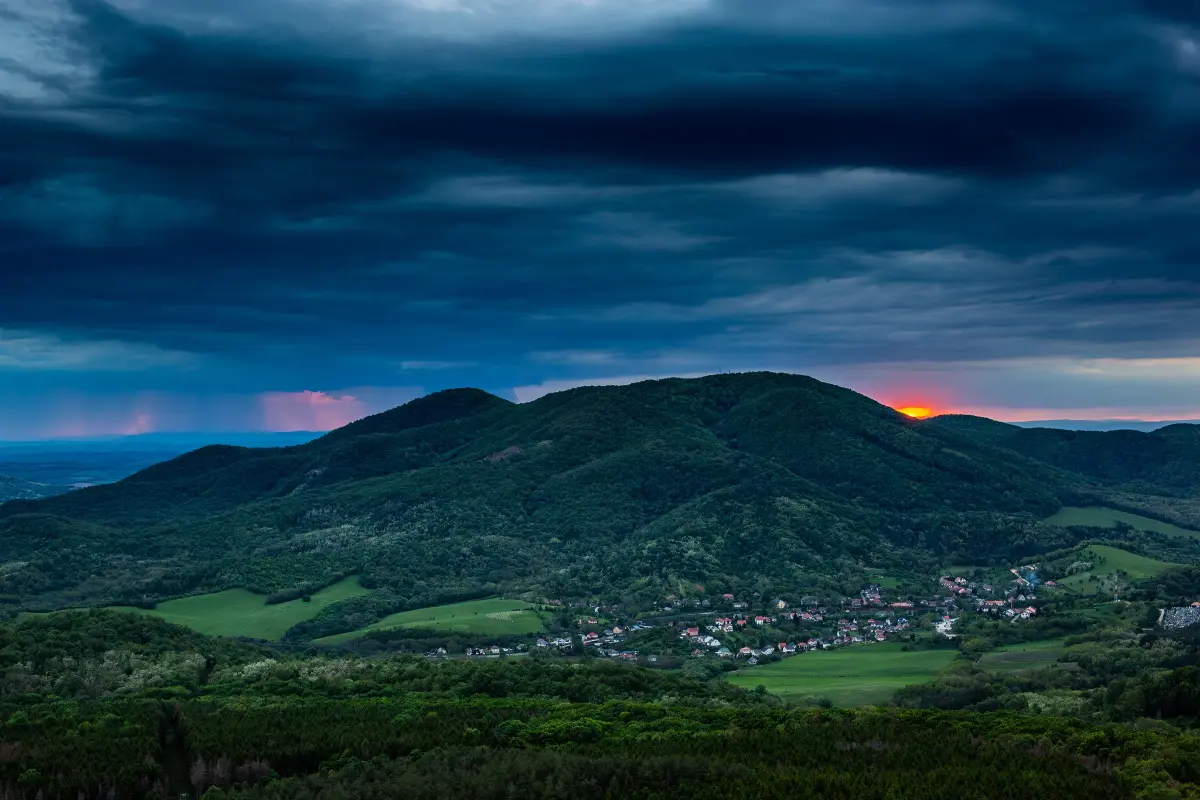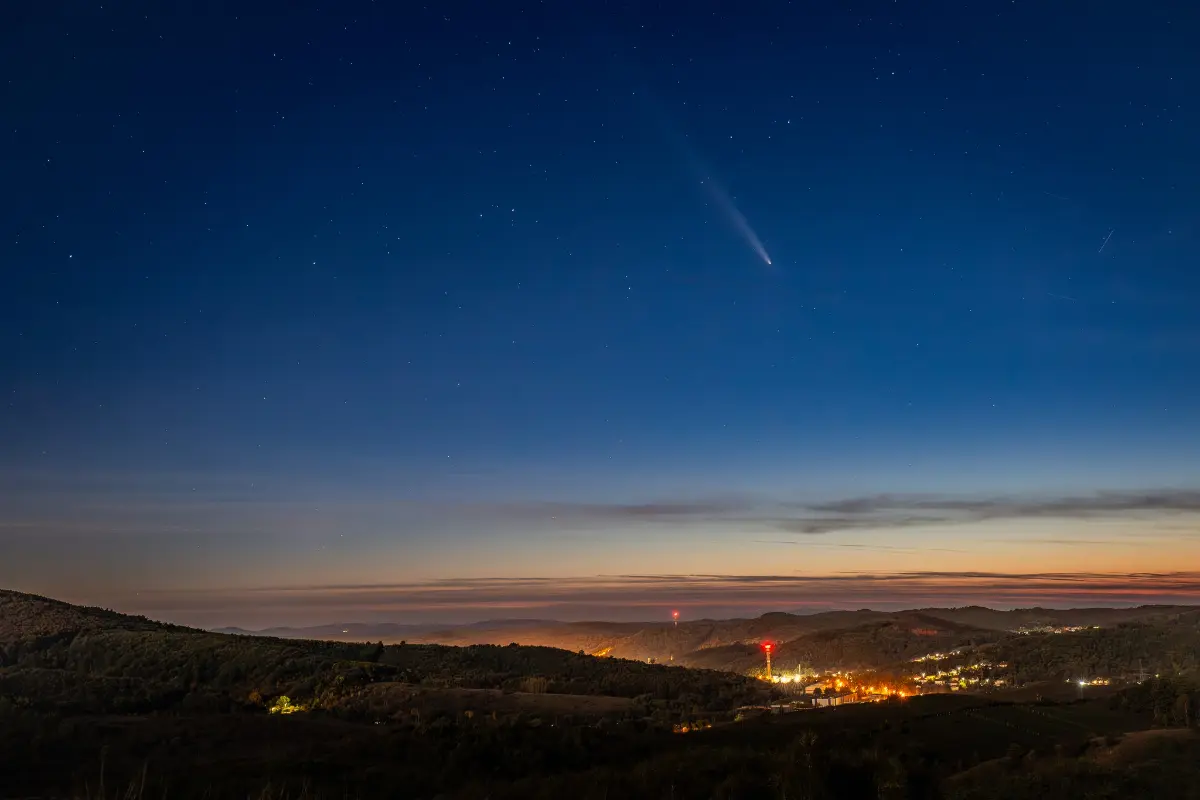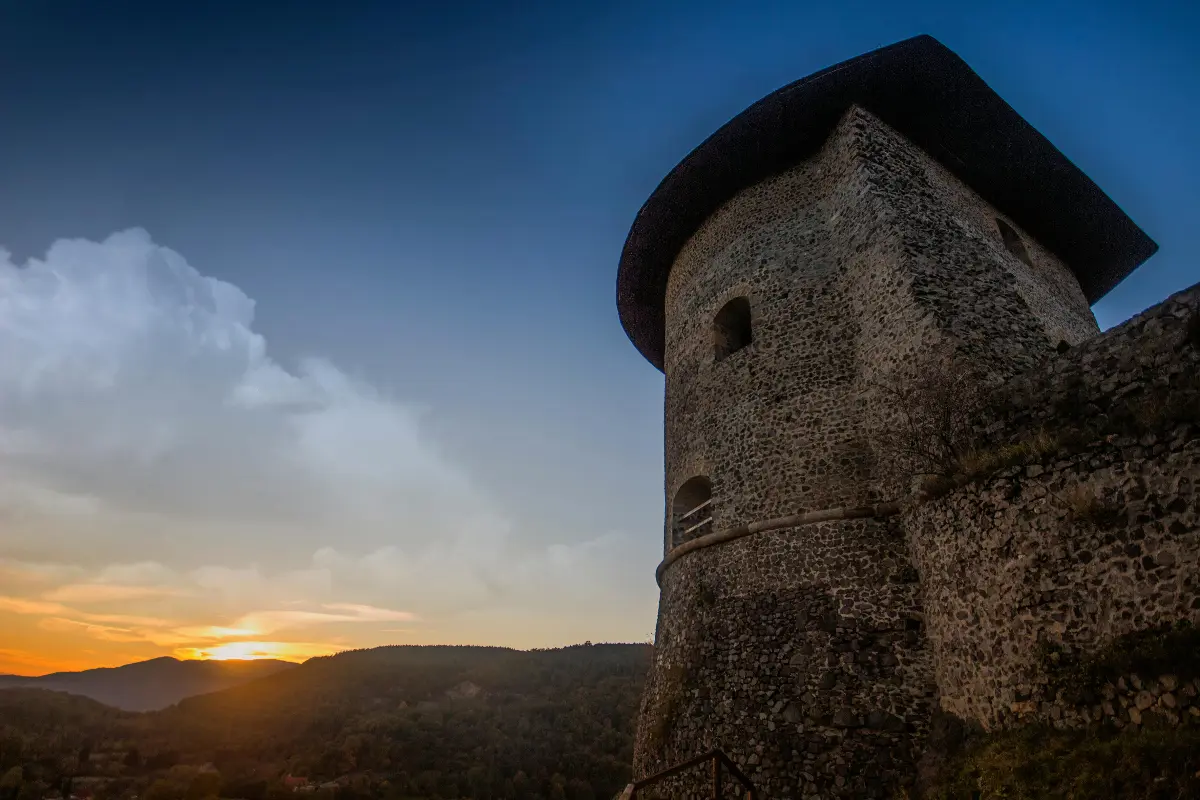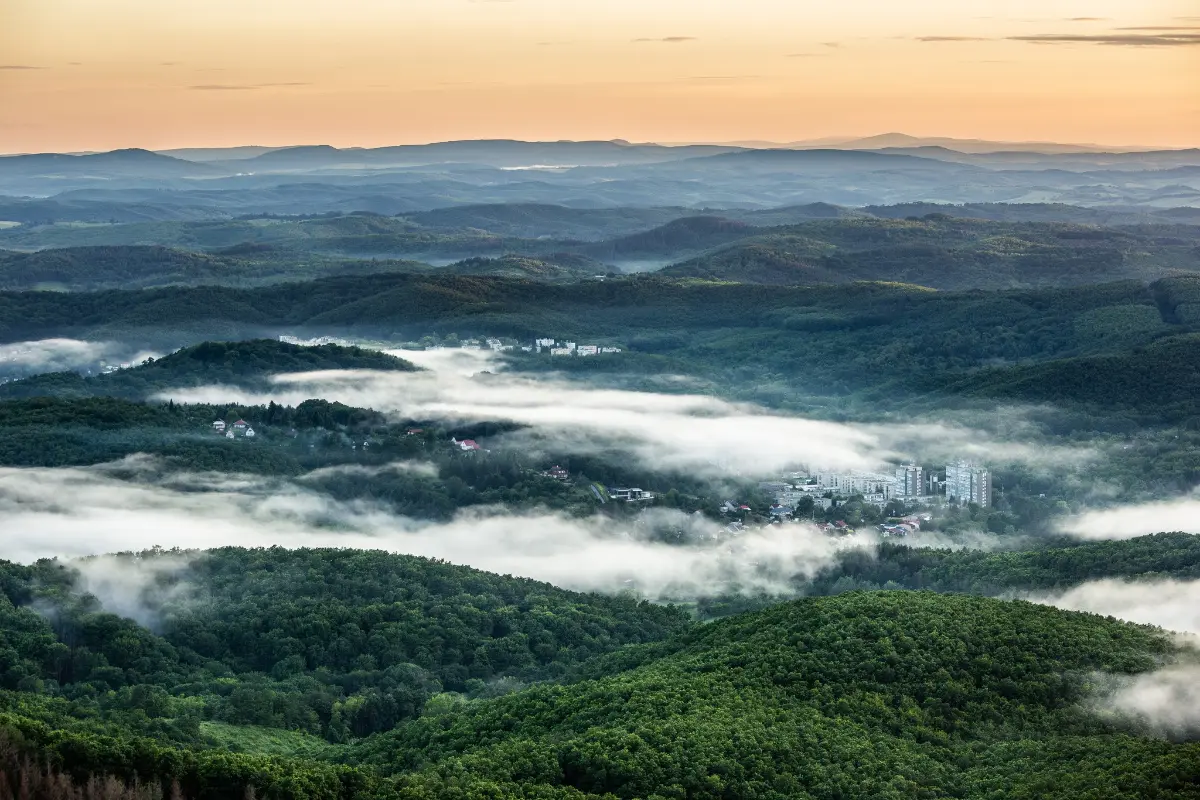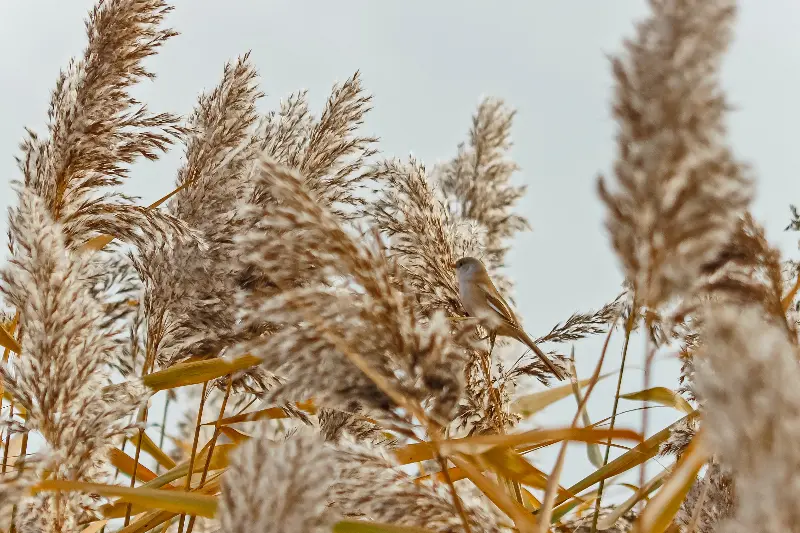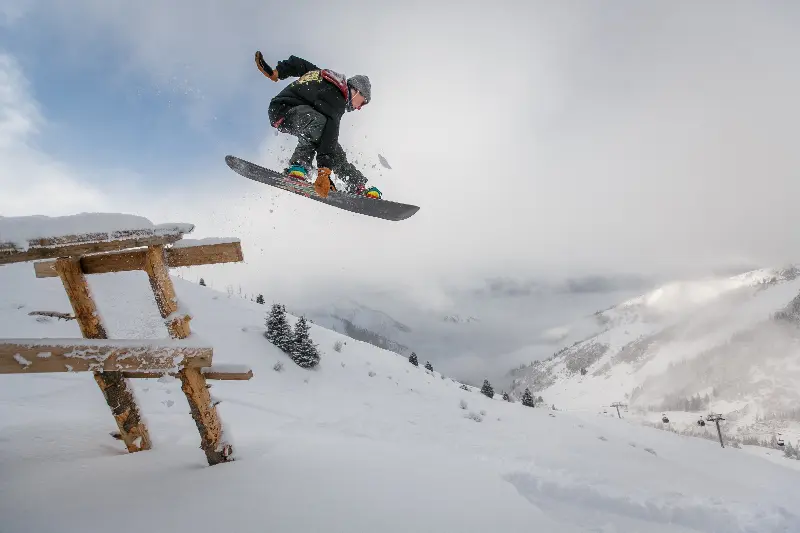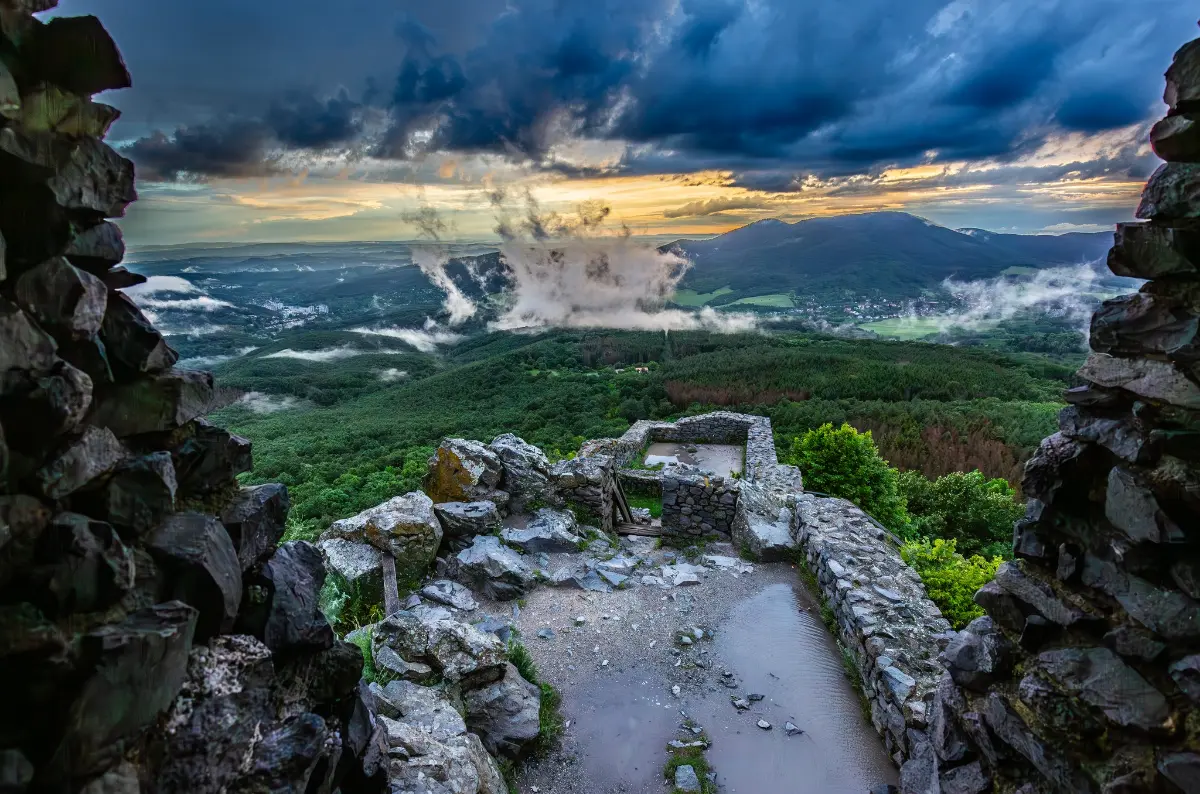
Helyszín címkék:
Adventure on the largest basalt plateau in Central Europe, the Medves Plateau
Szabó Sára
A geological treasure-trove on the border of two countries
The Novohrad–Nógrád Geopark is one of the most unique natural areas in Central Europe, where two countries – Hungary and Slovakia – jointly preserve the values of the region. In the first cross-border geopark in the world, you can get an insight into 30 million years of geological history in the area of more than 60 settlements. The area's special feature is its wealth of volcanic formations: basalt cones, basalt organs, lava flows and solidified chimneys testify to the once turbulent times.
One of the gems of the Nógrád-Gömör basalt region is the Karancs-Medves Landscape Protection Area belonging to the Directorate of the Bükk National Park, where extinct volcanoes, extensive forests and gorge valleys shape the landscape. In this approximately 550 km² area, basalt volcanoes have created cone-shaped mountains and flat plateaus.
One of them is the Medves, the largest continuous basalt plateau in Central Europe. The plateau is of outstanding national importance due to its geological values and scenic beauty.
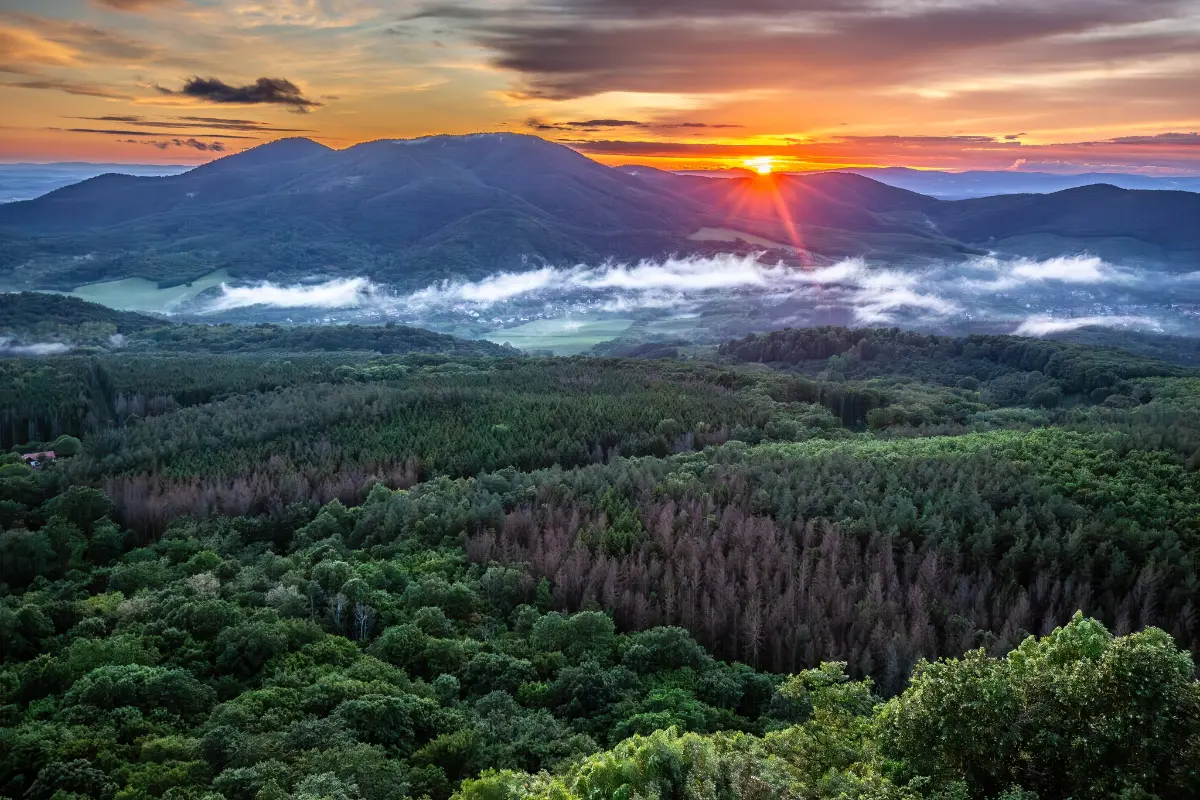
Photo: Szilárd Drexler
The Medves Plateau is actually a basaltic plain located at an altitude of 520–570 metres above sea level. It extends into Slovakia in the north, is surrounded by the peak of the Szilvás rock in the south, the Zagyva valley in the west, and the border in the east. The area is dotted with wonderful meadows, pastures and grove forests. The exceptionally beautiful area is home to a unique wildlife: anemones, ferns and rare orchids colour the landscape, and spring bogs and mossy rock meadows stretch out in the valleys.
The birdlife is also remarkable: you can observe, among others, the raven, the black woodpecker, and the highly protected white-backed woodpecker. The large stag beetle and one of the most beautiful European beetles, the Rosalia longicorn, are also found here. If you walk carefully in the countryside, you may even catch a glimpse of the great Capricorn beetle, which is very rare throughout Europe.
The plateau is most easily accessible from Rónafalu or Salgóbánya, as the basalt plateau is only a few hundred metres from these settlements.

History written in stone
Photo: Szilárd Drexler
During our journey of discovery, it is also worth going to the medieval castles built on cones! If you start from Salgóbánya, for example, you should definitely not miss the Salgó Castle! The fortress built in the late Romanesque style can be seen from afar, proudly towering on a 625-metre-high cliff. The Boszorkány-kő Geological Nature Trail, which is only a few hundred metres long, leads to the building along which you can also visit the nearby, special volcanic formation, the Boszorkány-kő. The rock formation towering on top of Kis-Salgó is also an excellent destination for excursions!
At the Salgó Castle, a dazzling panoramic view opens up before you, so it is worth taking a break and gazing into the distance, just like Sándor Petőfi did on 11 June 1845. This is where the poet's poem Salgó was written.
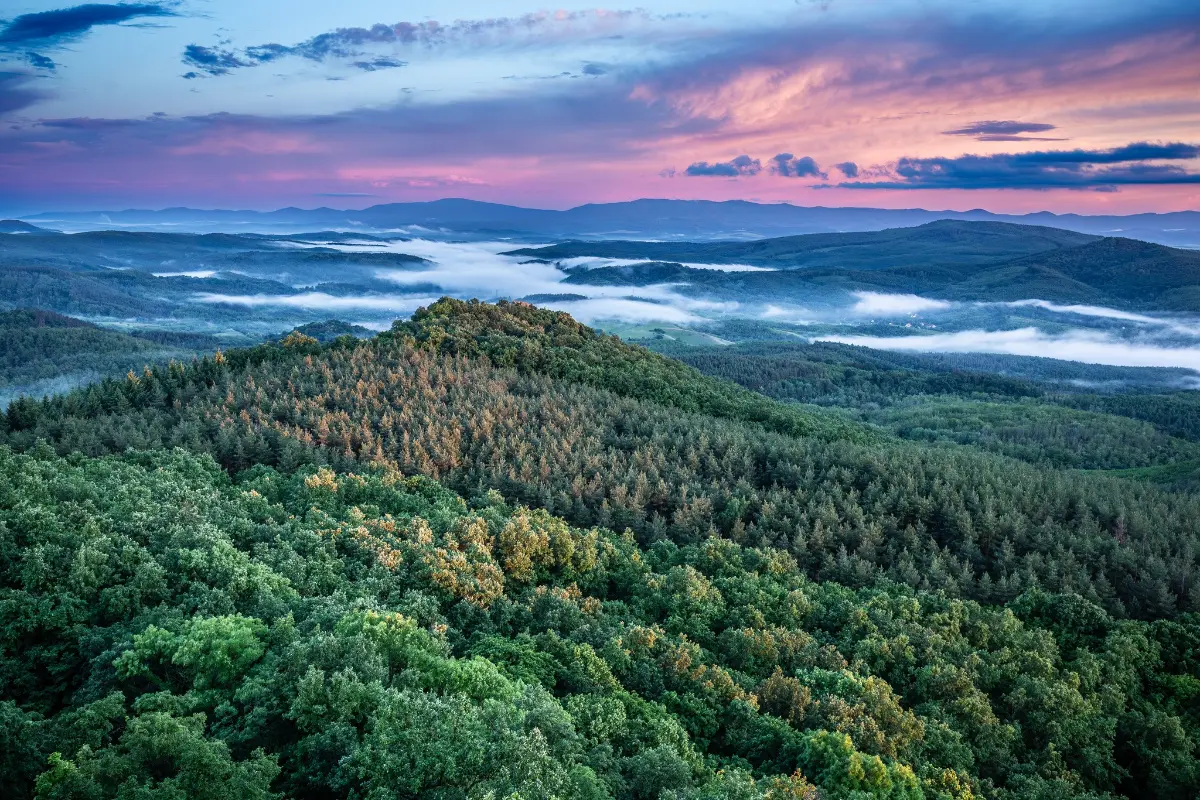
This wonderful viewpoint did not only fascinate Petőfi: there is a heartbreaking legend connected to the Boszorkány-kő. According to legend, two sons of a king fell in love with the same girl, but jealousy entailed fatal events. The girl was accused of witchcraft, and when she lost her love, she threw herself from the cliff into the depths in grief. According to legend, as she fell, she addressed her lover with her song, who threw himself after her in a dream. It is said that their song still echoes among the rocks today.
It is also worth visiting the 625-metre-high Szilvás rock, located south of the plateau, which is another impressive geosite of the basalt volcanic area. In addition to the steep basalt columns, the deep fissures formed during the former mining period exude a mystical atmosphere. The attraction can be approached along the 3.5-kilometre-long Szilvás rock nature trail, and during your tour you can learn about the mining traces and geological values of the area.
Fun fact: The Szilvás rock even confuses our compasses, as the magnetite content in the basalt is extremely high – around 7–8%. This iron oxide mineral can cause compasses and orienteering compasses used nearby to go “crazy”. It is worth trying, but only after you have memorised where north really is!
